Chaotic Food: The Strange Attraction of the Standard American Diet
Why does almost everyone seem to end up at the "Western Diet?"
This thought popped into my head while walking around the sweltering heat in Asia, recently. I was passing a bunch of food stalls and they were selling - fried chicken, fried pastries, fried dumplings, fried vegetables, and even what seemed to be effing churros.
“Here I am,” I thought to myself, “about as far away from America as you can get, and people are still selling & eating deep fried garbage.”
There were, of course, also some more traditional food stalls with more reasonable foods: largely rice or noodle based, often soupy/brothy, with a little bit of vegetables and meat or fish. What most of us would vaguely recognize as “Asian food.”
But the truth is, deep fried everything is just as much “Asian food” as it is “American food,” at least if you walk around in Asia a bit.
It’s funny because deep-fried food is sort of a visceral experience of the senses - the nauseating stench of old fryer oil, the weird, uniform, orange-golden hue that anything acquires when battered & fried. Presumably the crunchy texture, although I didn’t eat any of it so I missed out on that one.
And it’s not just America and Asia: you can find the Standard American Diet (SAD) everywhere, all over the world. SAD is really a misnomer, and even Western Diet is. It’s just the Modern Post-Industrial Junk Food Diet. I suppose MPIJFD is a terrible acronym, so let’s just stick with SAD for now.
Seeing the food stalls selling the worst version of the SAD got me thinking: these people come from a completely different dietary and nutrition background, and a completely different culture.
Yet, somehow, nearly everyone seems to end up at almost the exact same endpoint: The Standard American Diet.
What’s up with that?
Defining the SAD
First, let’s sketch out what exactly we’re talking about. The “Standard American Diet” of old could be described as bread with butter, apple pie, and pork chops. But no more. That’s not what people mean by the term, at least.
Typically, the SAD is defined by:
Deep-fried foods: fried chicken, french fries, chicken-fried steak/fish, fried shrimp, sometimes fried vegetables
“Junky” pastries: think the sort of pastries you’d find at a gas station, not your grandma’s hand-baked cinnamon rolls or Brad’s fancy croissants. Infinite shelf life, sort of a mushy yet greasy texture to it, chewy in a weird way that is not always pleasant. These pastries can be sweet or savory (common in Asia, think a gas station version of a meat pie). Pastries are interesting because we’ve had them forever, but these tend to be made quite differently, with different ingredients and infinite shelf life, on an industrial scale. Not your grandma’s cinnamon bun.
If there is meat and it’s not deep-fried, it’ll come on a bun like a hamburger or similar, typically with sauce added.
Lots of thick, creamy, flavorful sauces added to everything
Beverages are typically more entertainment than liquid, e.g. colorful with attention-grabbing names, extremely flavorful, often unnatural flavors (e.g. Mountain Dew or Coke), either with sugar or these days commonly with non-caloric sweeteners. Still, these will have tons of ingredients and their aim is not to provide hydration but entertainment.
There is typically lots of candy. I think it’s sort of hard to categorize candy, since candy per se has existed for a long time. I’m actually not sure if it just became much more common to eat high volumes of candy, given how recipes & dinner plans from early 1900s America often include pie or other dessert with every meal. Maybe people used to drink a 12oz Coke once a day, instead of a Big Gulp with every meal? I think there’s less of a categorical change here and it must be more qualitative or quantitative.
You could say that there are 2 categories of typical SAD foods:
Faux-versions of traditional foods that substitute different ingredients and are made on an industrial scale, often with the aim of infinite shelf life or enhanced convenience so you can eat them on the go/in the car instead of having to sit down. Think Hostess cakes vs. a piece of grandma’s home-made pie.
Completely made-up entertainment “foods” like Mountain Dew, Twizzlers, M&Ms, etc. that have no tradition they’re imitating. These tend to be more colorful, poppy, and have attention-grabbing names because they’re not even attempting to be anything your grandma would’ve made.
Strange Attraction
There is a branch of math called chaos theory. In short, it deals with calculations that are very difficult or even impossible to predict with common methods, and that often show confusing or “mysterious” behaviors. Many of them seem random but are surprisingly “ordered,” or they seem more random than you would expect at first glance.
Maybe the most famous visual representation of such a chaotic phenomenon is the Lorenz Attractor:
This lil’ guy looks like a butterfly. It is what is called a Strange Attractor. I would be lying if I claimed to totally understand what that means, but 1. it sounds cool and 2. I think the vague pop-culture explanation is exactly what we’re looking to borrow here anyway.
The mysterious part about strange attractors like the Lorenz Attractor is that we can throw pretty much any number into an equation or system of equations, and if we plot them, they form strangely non-random patterns like the butterfly above. It’s mysterious because we didn’t exactly design these equations to produce butterfly pictures on purpose, it just sort of.. happens.
How, then, is this connected to the Standard American Diet?
That is what I was turning over in my brain when I was on that walk. How come that almost everybody, coming from any culture, with almost any foods, eventually seems to land on the SAD?
The SAD is a Strange Attractor
Every post-industrial society connected to global markets & culture seems to end up with fried foods, junk pastries, lots of candy, and colorful, flavorful entertainment candy & drinks.
How come?! Isn’t it weird? How come the Koreans love fried chicken as much as Americans do? How come the Japanese have almost the same junk pastries in their convenience stores that we have at a Love’s truck stop?
And yea, of course there are regional variances and not everybody is 100% on a junk food diet yet. There are historic reasons why the U.S. South was eating tons of fried chicken even before modern times, and I’m sure it was similar in Korea.
And like I said in my post about gaining 19lbs in a week in Japan, the Japanese have “fast food” “pastries” that I wouldn’t consider junk or unhealthy because they’re made from rice, nori seaweed, and fish.
But we also had traditions in America or other Western countries, and many of those didn’t make it. It seems curious that the ones that last are the ones that lend themselves to be incorporated into the SAD. Fried chicken over boiled chicken. Hamburgers w/ soybean sauce and glazed buns instead of rye-bread sandwich with a slice of cheese & ham. There is apple juice still, but what % of people do you see buying Coke or Mountain Dew vs. Snapple?
There does seem an international trend of people mysteriously ending up at the SAD, either by importing American-made food outright, importing American food ideas and recreating them, by keeping SAD-adjacent food traditions of your own and tossing the others, or by modifying traditional foods into SAD versions (e.g. pastries).
What factors make the SAD so attractive?
Let’s get to the (chicken-fried) meat of this idea: WHY does everyone end up here?
It seems to me that there are broadly 3 categories of reasons, although there is some overlap:
Economic
Scientific
Lifestyle changes
These foods are ideal in terms of bliss point, convenience, and hiding ingredients
Economic: SAD foods are cheap
SAD foods are cheap to produce at industrial scale, and require little training to prepare/cook at the restaurant itself.
Fried food ingredients
You don’t need a pork chop or a steak, all you need is some chicken breast. Batter & deep fry it and slather it with sauce, and people will still eat it.
You can even use reconstituted ground up chicken leftovers and sell them as chicken tenders or nuggets. This way, you can use up all the remaining pieces of the animal’s carcass and are not limited to certain cuts. (As a side note, I don’t think using these parts is necessarily unhealthy.)
Ingredients for fried foods:
Cheapest meat possible (typically chicken or reconstituted chicken)
Flour for breading
Seed oils for cooking & sauce
Fried chicken in particular is just a conspiracy to feed you seed oils. Let’s look at the kcals from fat in a bunch of fried chicken offerings:
Cracker Barrel Chicken Tenderloins: 47% kcals from fat
No name breaded, fried chicken: 59.7% kcals from fat
KFC Fried Chicken: 65.6% kcals from fat
Popeye’s Fried Chicken: 67.2% kcals from fat
Pastry ingredients
What are the main ingredients in all the junk pastries? Here are the ingredients of one example. I just went to Walmart.com, typed “pastry” in the search bar, and picked a random result.
Ingredients in order are: fortified wheat flour, sugar, dextrose (which is a pure glucose sugar), palm oil, soybean oil, non-fat milk.
This is pretty typical. These junk pastries are typically largely:
Flour
Sugar
Seed oils
In case you think the seed oil proportion here is not significant, let’s look at the nutrition label for this pastry:
11g fat. 11g * 9kcal/g is 99 kcal from fat, which is 45% of the entire calories for the serving size. I.e. these pastries are heavily saturated with fat. More than half the fat is unsaturated.
In comparison, even cheap bread from Walmart that includes soybean oil typically has way less fat than that as a percentage. The first random white bread I looked up had 12% kcals from fat despite containing soybean oil.
For one, these pastries are insanely swampy. Second, all this added fat isn’t tallow or butter, it’s typically as much cheap, industrial seed oils as they can get away with.
You can see they use palm oil besides just soybean oil. This is because palm oil has more saturated fats and therefore lends itself to a solid food more. They used to just use hydrogenated seed oils, but those are outlawed in significant quantities now.
Palm oil still has about 10% linoleic acid, which is about 5x what butter or tallow have, if not quite the level of soybean oil (50%). Still, between the palm oil and soybean oil, this pastry is going to have huge excess of linoleic acid, the “bad fat” in seed oils.
Sauce ingredients
Let’s look at one popular, “creamy” sauce.
Ingredients:
Soybean oil
Sugar
The rest is just flavoring.
Let’s look at the nutrition label:
A serving of 31g contains 14g of fat (100% soybean oil, as we found out) and 7g of sugar. That leaves 10g for water and flavoring.
Candy & soda ingredients
With candy there are 2 categories.
One category is “pretty much pure sugar” which is also what soda is, unless it’s sweetened non-calorically.
For those, obviously, sugar is the only real major ingredient.
The other group is sugar mixed with fat, often chocolate-type candy. Some of them use real chocolate (i.e. milk chocolate made with milk), others use seed oils for the fats, or at least mix them in:
Ingredients:
Sugar
Seed oils
Flour
If these contain seed oils, that’s obviously bad. But even the ones made with real (milk) chocolate are typically super swampy.
A look at the nutrition label shows us that this chocolate bar contains 48% of its kcals from fat, again nearly half. I bet any more oil and it would start to liquify.
Overall, the ingredients we tend to see in almost all SAD foods are:
Wheat flour
Sugar
Seed oils
If there is any meat, it’s the cheapest possible, e.g. reconstituted chicken tendies
If there is any dairy, it’s typically skim milk or whey powder
So one economic reason for SAD foods: the ingredients are extremely cheap.
They are also engineered to be very shelf stable, which makes them cheaper to store and simplifies transport.
Labor is cheap
One of the main advantages that fast food restaurants have over regular restaurants is that the cooking process is not just faster, it’s also extremely simplified.
To run your typical fast food restaurant you don’t need to hire a trained cook for anything. You can just hire a bunch of teenagers. If they can show up on time and operate a microwave, they can run your kitchen.
Fried food typically comes pre-breaded and sometimes even pre-fried from the factory. The teenaged employees just have to dump it into the fry basket, lower it into the fryer, and wait until the machine beeps.
If your fast food joint has the teenagers french fresh potatoes for the fries, that’s about as good as it gets. Most just ship pre-frenched fries in big bags to the restaurant locations from a centralized factory.
What’s the alternative? Even if your restaurant isn’t serving fancy Michelin star foods, most traditional cuisine requires more time & skill to prepare.
Could you make a croissant from scratch? (Don’t answer that, Brad!) Or a pie? How long does it take even an expert baker to make a pie?
Maybe a Japanese grandma can make ramen from scratch, or a Vietnamese one a serving of pho. There’s quite a bit of skill & knowledge involved. How long does it take to even just prepare the broth?
You can seriously screw up when cooking a steak, or fish. Deep frying, not so much. Yes, you can technically undercook or burn foods in a deep fryer, but the foods are typically standardized and the machines programmed with the correct cooking times.
Worst case, you throw out a serving of burnt fried chicken (but leave the toxic oxidation products in the fryer oil!) and start over. Frying times are typically in the single-digit minutes, so the customer will only have to wait an extra 2-4 minutes anyway.
So we got cheap ingredients, cheap transport, cheap storage, and cheap labor.
Science is global & winner-takes-all
Science knows no borders and is sort of a winner-take-all discipline. The country that dumps the most money into its scientific institutions (currently America, is my guess) will produce the most results. Most other places will just take those results.
That way, science is “winner takes all.”
That’s great if correct & valuable science is spread, nearly for free, from America to other countries.
But what if American Science were to screw up royally, get everything wrong, and then fight anybody who disagreed?
Hypothetically, I mean.
You think America’s military adventures overseas are a blight?
Wait until you learn about American nutrition science.
American scientists convinced the world that saturated fats, often animal fats, are the devil, based on no evidence or even manufactured evidence.
Do you honestly think every other country reproduced those studies and came to their own conclusions?
Of course not. They just copied Ancel Keys’ homework and stole our food pyramid/plate/whatever shape it is right now.
When the major science blob gets something wrong, it unfortunately is just as bad as the effect of good science spreading fast. We now have a nutrition framework & paradigm that is wrong about nearly everything important, and they’re funded by billions of American taxpayer dollars.
Do you really think Joe Schmoe at a Vietnamese university is going to have much say if he runs his own experiment and tries to publish contradictory results?
I have long believed that nutrition science is the worst Bad Guy in modern nutrition, worse than Big Food or Big Pharma.
That’s because science is even less accountable. You can stop buying McDonald’s, but you can’t opt out of the food pyramid or the RDAs as easily. They’re extensions of the government, and when the government gets something very wrong, it’s nearly impossible to just avoid.
Science is also upstream from commerce. Yes, Big Food has food scientists. But they don’t make the rules, they just try to make stuff last long on the shelf or make it more flavorful or cheaper.
McDonald’s scientists aren’t determining if seed oils are heart healthy or if foods should be fortified.
For that sort of science, they simply accept whatever the “real” government-sponsored scientists tell them. Far too risky for a food company to take on the status quo in terms of health and nutrition. And why bother? Nobody is expecting McDonald’s to keep you healthy, anyway. We look to “real” scientists for that.
Modern, Post-Industrial Lifestyle
There are certain features of our modern lifestyle that I think shape our preference for SAD foods, both individually and as society. I’m sure there are way more, here are just some I came up with.
Both parents working → no dedicated homemaker
Almost every modern society seems to end up with both parents working. That means that mom’s not at home, spending 2h to get dinner ready, or making breakfast from scratch in the morning.
That means any meals eaten at home must be quick to prepare. And often times they must be low-skill, too. Just as mom doesn’t have time to cook dinner for the family, she also probably hasn’t gained the same skill set that grandma did, because she was busy going to school to get trained for her job.
That means even if mom had time, she probably couldn’t prepare the same meals that grandma could. At the very least, she would not be as accustomed to it.
There does seem to be a trend going back in the opposite direction, with women wanting to become full-time homemakers again and cook traditional food.
Let’s see if the tradwives can save the next generation of kids, lol.
People are busy and want convenient food
Life in general is more hectic. Go to work, work work work, “grab a quick lunch” that you probably eat at your desk, work work work, go home, watch TV.
Food needs to be quick to acquire, and it needs to be quick to eat. It’s also easier to eat if you can just hold it in your hand, possibly even while driving, so the pastries or sandwiches are common.
Other SAD foods aren’t quite as convenient to eat. I don’t know if I’d try eating KFC while driving a car. Imagine how slippery the steering wheel would get.
But still, these foods are quick to grab in the drive-thru or restaurant where they have pre-fried batches of everything. You can wolf them down, then scrub the grease off your hands, and be on your way.
Candy & soda are obviously extremely convenient to consume on the go.
Food is Entertainment
I think for many people food serves at least partially not just as nutrition, but entertainment. I don’t think this is a huge categorical shift compared to the last 100 years.
Sure, at one point people were so destitute and poor that they’d eat flavorless gruel and were just happy not to starve. But we’ve been rich for quite some time now, and I remember my grandparents enjoying their food, and I’m sure the people in 1900 got at least some entertainment out of their food.
But the traditional social constraint of e.g. 3 meals a day, typically 2 eaten with family and 1 over lunch, has also been dissolved, with many people now just eating whenever, typically alone or in an anonymous crowd.
That means if there are any sus foods in your general food supply, say desserts, or fried chicken, or something of that nature, you couldn’t as easily over-indulge. You’d get your share served by mom, and if you wanted extra, you’d need to ask for permission and you might be scolded for being so greedy.
If there is a category of food that is ok in moderation, then removing social enforcement of moderation would predictably lead to worse health outcomes.
In a way, mono-diets like my ex150 or rice diet experiments, or even slightly less but still restrictive diets like carnivore & whole food plant based are paradigms to resolve this problem.
If you think some food is ok in tiny amounts or moderation, but you realize you cannot moderate yourself enough for whatever reason (e.g. no grandma to slap your wrist when you reach for another slice of pie), then you can adopt a diet that cuts out this food entirely, and even turns avoiding it into a moral good.
Ideal in terms of bliss point, convenience, and hiding ingredients
Finally, one “strangely attractive” quality of many SAD foods is that they are just at the bliss point in various dimensions.
One is the literal bliss point, as in “what makes food give you a hit of enjoyment.” This tends to involve a swampy mix of fats & carbs (with some exceptions like soda), a certain texture, and just generally very overpowering or strong flavors.
Fried food is extremely crunchy, no matter what you use for the base. Pastries tend to be nice and chewy, or you can make them more crunchy as well.
Another dimension in which these are optimal is just the convenience, like we just talked about. You can buy all those gas station pastries and eat them while driving. Sodas or candy can easily be consumed while driving or on the go.
Lastly, these types of swampy foods allow food manufacturers to hide pretty much any ingredients.
Flour, especially when fried or baked, soaks up enormous amounts of liquid. That way you can saturate it (heh) with seed oils to the brim.
We saw above how one pastry is 45% kcals from fat, and the chocolate bar is even 48%.
If you wanted to construct a food that contains this much fat and isn’t either an animal product or liquid (coffee w/ cream), you’d have a hard time unless you use this swampy “carb soaked in fat” technique.
What would you do, just hand people a glass of soybean oil? It would be quite unpalatable. Many traditional foods are less swampy than the average SAD food. Yes, there are French Paradox foods like croissants or bread with butter, but there are entire cultures that had few of those (e.g. Japanese or Vietnamese cuisine, in my understanding).
Historically there were people eating lots of animal foods, which wouldn’t have as much carbohydrates in them and almost no sugar.
Other people were farmers and ate very high-carb foods, often 70-90% of their carolies coming just from carbs.
Sometimes, people would cycle between those according to the seasons or just luck of the hunt/gather.
The swampy mix of the two in the same food is relatively rare, although it does exist. Typically, it involved that society being pretty rich, because you need both animals foods & farmed carbs to make it happen. For example, you need dairy to make the French Paradox foods like butter & bread, or butter croissants, even cheese sandwiches. Dairy is relatively expensive in food terms, and was historically often used only by people that had an advantage in dairy production and disadvantage in farming (e.g. hill people, or climates where starches don’t grow well).
Fatty meat was also historically expensive & prized, and adding fatty bacon or ham to a stew of beans and vegetables was considered a luxury.
It could therefore be that swamping is just historically rare, and while many people can or could handle it, those people were always an exception.
The societies that started swamping earlier also started getting sick & obese earlier. That’s the whole reason we call these “Western Diets” and not “Asian Diets” although many (rich) Asians eat them now.
Of course, it could be that swamping is inherently not a problem, and the true cause just happens to correlate with wealth.
In either case, in modern times, these swampy mixes of flour, sugar, and seed oils allow the food industry to sell you more seed oils than you ever imagined.
After all, you don’t even know you’re eating seed oils. In your mind, this is just a cinnamon roll, or fried chicken. That the flour is entirely soaked with seed oils and provides 45-50% of kcals from them is probably news to 95% of Americans.
Conclusion
There are pretty good explanations why every society seems to, over time, end up on the Standard American Diet.
Of course I’d love if this were not the case. But first we’d have to nail down exactly what it is about the SAD that makes it unhealthy & obesogenic.
Is it just the linoleic acid content? Is it the swamping? Is it the high fructose? All of the above? A certain combination?
I think science is upstream here. If we don’t know what makes the SAD bad, we won’t fix it. Clearly the SAD is attractive enough that entire countries choose it despite it clearly being unhealthy & obesogenic. They looked at America getting unhealthy & obese, shrugged, and said “I still want to eat that.”
People like convenient food, and working instead of being homemakers, and eating while driving, and swamping.
It’s probably more realistic to find out what part of the SAD is unhealthy and removing it, leading to a healthy SAD if that’s possible (HAD? Healthy American Diet?).
Then we can sell people convenient foods that won’t make them unhealthy & obese.
The alternative is telling people to forego the benefits of convenience food and to return to a lifestyle that their societies no longer support or advocate.
Everybody wants people to be healthy, but is it a viable option to tell women to stick to the kitchen? Because that’s sort of the implication, isn’t it?
And while we’re at it, we should probably tell men to skip office jobs and go back to working the land.
As long as we can’t identify the crucial, causal factor that makes the SAD unhealthy, we’re just cosplaying our favorite period “when people were still healthy”: for some that’s 1950, for some it’s 1880, for some it’s the paleolithic.


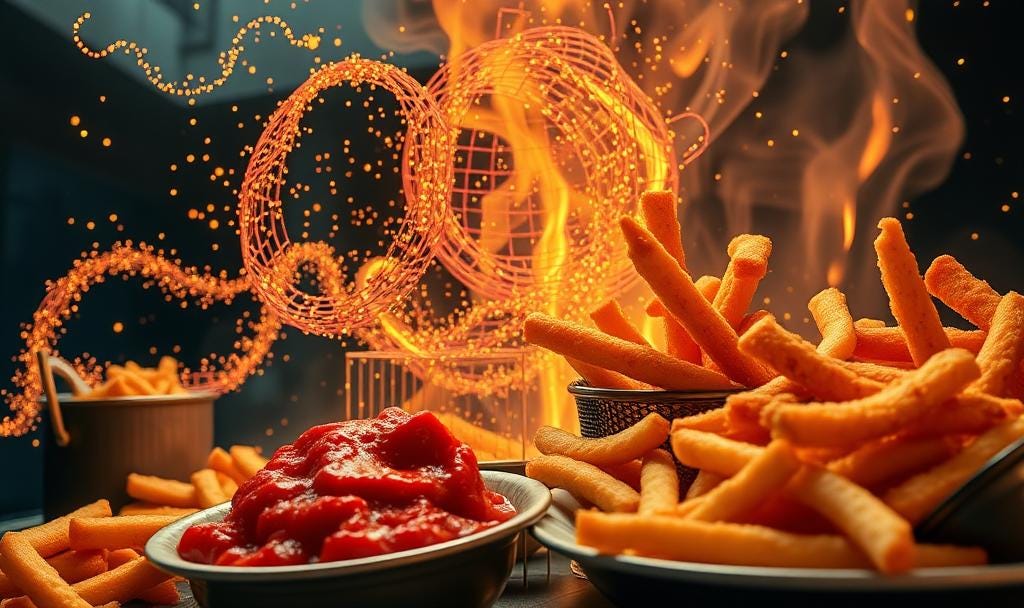

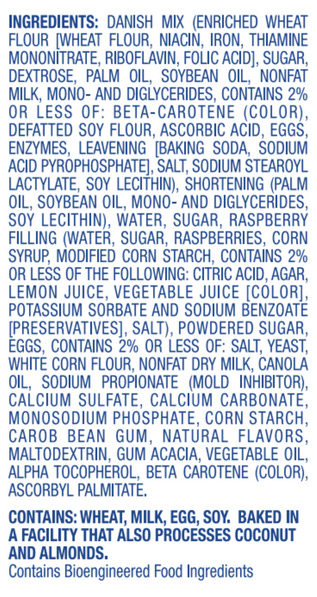
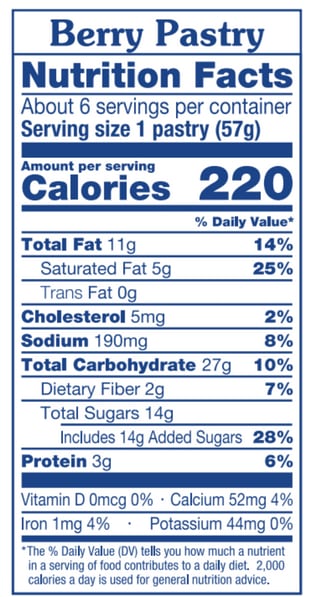

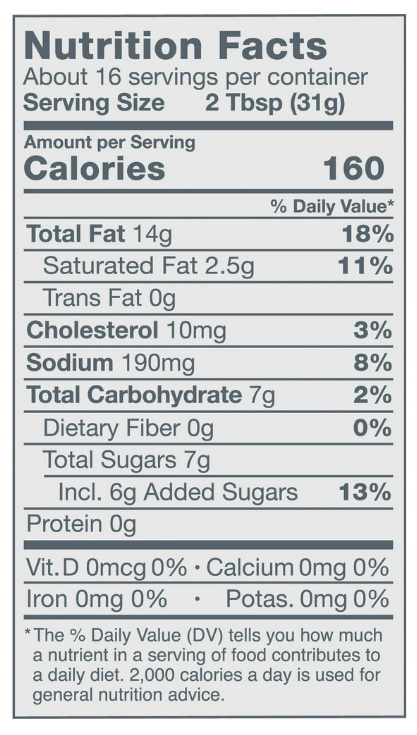
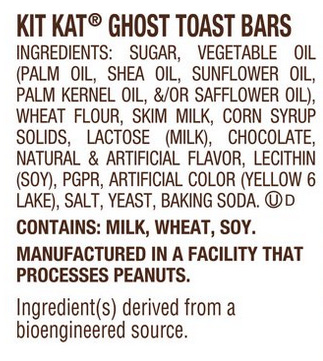
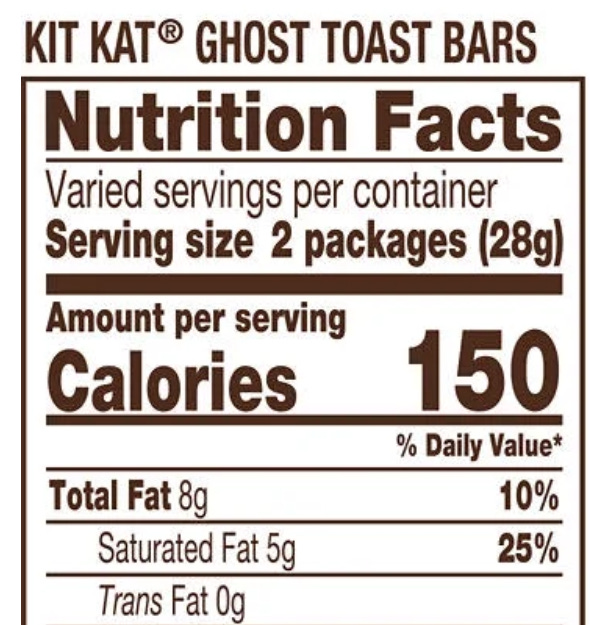

>The mysterious part about strange attractors like the Lorenz Attractor is that we can throw pretty much any number into an equation or system of equations, and if we plot them, they form strangely non-random patterns like the butterfly above. It’s mysterious because we didn’t exactly design these equations to produce butterfly pictures on purpose, it just sort of.. happens.
fwiw, strange attractors are a minority of attractors in dynamical systems, and your description is more consistent with SAD-analogues being a fixed-point attractor https://en.wikipedia.org/wiki/Attractor#Fixed_point
the broader point about economic forces (supply & demand both) converging on SAD is well made
"Many traditional foods are less swampy than the average SAD food. "
Tie into with Cuisine and Empire (https://substack.com/home/post/p-166902514 , fantastic book and review) and you see that also, historic foods (other than the subsistence peasant diets which were often close to mono-diets) changed a ton! There's a cool part in the book where it is revealed that high class Spain in maybe the 1400s (?) was just exclusively pastries - everything was made into a pastry for every meal. And then a few years later that changed entirely, and then later changes again as they incorporate new world foods.
And yet I don't think there's anyone who noted any kind of effects from this - and you'd think there'd be decent data on it for the nobility (we have good data on who died in battle, and extrapolate economic data from that) if they were having radically different health outcomes as a result.